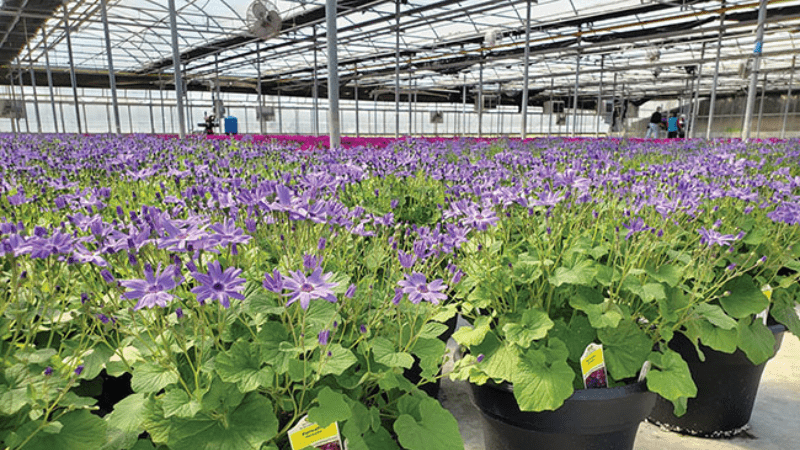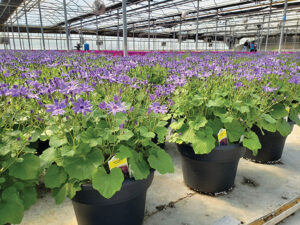
Technically Speaking: Crop acclimation
Plants are sessile organisms, meaning they can’t relocate when growing conditions become unfavorable. Thus, plants have developed mechanisms to perceive and acclimate to the environment so they can tolerate adverse conditions (to a point, of course). These responses are important for survival outdoors but also when grown under less stressful conditions inside controlled environments such as greenhouses. Understanding these responses can give growers insights about how to manage environmental conditions to regulate crop growth and flowering.
Temperature is the primary controller of plant development, meaning the rate at which cells divide and new leaves and flowers form. Temperature also regulates plant growth by influencing the rate of photosynthesis, the biosynthesis of sugars, and respiration, the metabolism of sugars. Light provides the energy for photosynthesis, and typically plant biomass increases with light intensity (i.e., the daily light integral). Light quality, which refers to the spectral distribution of light, influences morphological responses such as the magnitude of branching and elongation of stems. Plants perceive these environmental conditions and make cellular modifications to maximize growth and better tolerate environmental stress.
There are different ways that plants acclimate to temperature. The first is the regulation of photosynthesis. When the growing temperature increases or decreases over time, cells are modified so that the rate of photosynthesis is re-optimized for the new growing temperature. Second, as the temperature decreases, the biosynthesis of some protective compounds increases. This can change leaf color, such as the purpling of leaves, and increase the ability of a plant to better tolerate low temperatures. Thus, exposing plants to a period of cold but non-freezing temperatures increases the tolerance to freezing temperatures and decreases susceptibility to chilling damage.
ACCLIMATION TO LIGHT INTENSITY
Plants are remarkably able to modify their anatomy based on the light environment. Light is a form of energy, and plants must be able to maximize it for photosynthesis and dissipate it when excessively high. As light intensity increases, the layers of chlorophyll inside a leaf typically increase to more fully utilize the available light. The thickness of the protective outer leaf layer, the cuticle, also increases. Combined, these result in thicker leaves. Leaf size typically decreases with higher light, partly to help prevent overheating. If plants are initially grown under high light and then transferred to a lower-light environment, the opposite will occur; new leaves will be thinner — less chlorophyll and thinner cuticle — but larger to better capture available light.

ACCLIMATION TO LIGHT QUALITY
In addition to light intensity, plants have receptors that perceive different wavebands (colors) of light. The major ones that influence plant growth primarily absorb blue/UV light or red and far-red light. Plant responses to these colors are complicated, but generally, UV and blue light inhibit stem elongation and leaf expansion as well as increase leaf pigmentation. Far-red light does the opposite; it increases extension growth and decreases leaf coloration.
When plants experience shading from other plants, the intensity of blue, green and red light dramatically decreases, whereas the intensity of far-red light only decreases slightly. This is because leaves absorb most blue, green, and red light but reflect or transmit most far-red light. A decrease in red light relative to far red light triggers a shade-avoidance response.
UV and blue light are high-energy wavebands, so when plants are transferred to an environment with more UV/blue light, leaves typically become darker and new growth will be more compact. These acclimation responses are similar to high- light responses. In contrast, when shade is perceived by a decrease in the red to far-red light ratio, plants expand their stems and leaves to capture more light. Combined, these acclimation responses show that modifying the light spectrum can inhibit or promote plant elongation, whichever may be desired inside controlled environments.
To conclude, plants are considered “plastic” in some ways because their growth, architecture, and stress tolerance partly depend on acclimation to environmental factors, especially temperature and light. By understanding how and why plants respond to these parameters, we can control environmental conditions to help elicit the growth characteristics desired for crops.


 Video Library
Video Library 




















